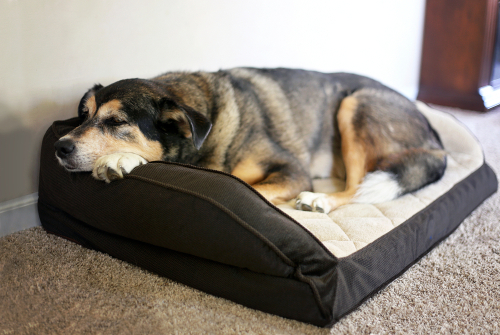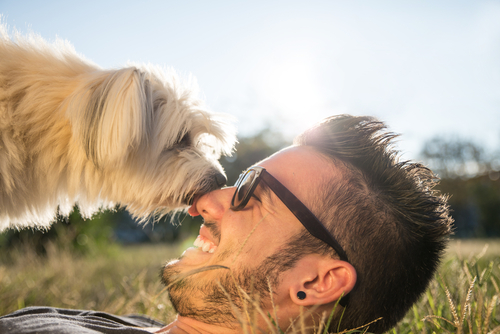Getting to Know Your Rescue Dog
Getting to Know Your Rescue Dog
Adopting a rescue dog is an incredibly rewarding experience, but it also comes with its own set of challenges and adjustments. Getting to know your rescue dog in the first few weeks are crucial for building a strong bond and ensuring your new friend feels safe and secure in their new environment. Here are some essential tips to help you navigate this exciting period.
Creating a Safe Space
Your rescue dog may feel overwhelmed or anxious in their new surroundings. Designate a quiet, cosy area where they can retreat and relax. This space should include a comfortable bed, some toys, and access to water. Allow your dog to explore their new home at their own pace, and avoid overwhelming them with too much stimulation right away.
Establishing a Routine
Dogs thrive on routine, and having a consistent schedule helps them feel more secure. Set regular times for feeding, walks, and playtime. This not only helps your dog adjust to their new home but also establishes your role as their caregiver and leader. A predictable routine will reduce anxiety and help your dog settle in more quickly.
Building Trust
Patience is key when it comes to building trust with your rescue dog. They may have had negative experiences in the past, so it’s important to approach them with kindness and understanding. Use positive reinforcement techniques, such as treats and praise, to reward good behavior and create positive associations. Avoid punishment, as this can damage the trust you’re working to build.
Socialisation
While it’s important to give your rescue dog time to adjust, socialization is also crucial for their well-being. Gradually introduce them to new people, places, and other animals. Start with controlled, positive experiences and gradually increase exposure as your dog becomes more comfortable. This will help them develop confidence and reduce fearfulness.
Keeping the Garden Secure
A secure garden is essential for your rescue dog’s safety and well-being. Here are some steps to ensure your outdoor space is dog-friendly:
Check the Fencing
Inspect your garden fencing for any gaps, holes, or weak spots that your dog could escape through. Repair any damage and ensure th e fence is tall enough to prevent jumping. Maybe consider installing an electronic dog fence as this will cover weak and vulnerable areas without spending thousands on new fencing or gates. If you’re resurrecting an old using a dog fence, make sure it’s properly installed and that you are aware of the timescales and how to train your new friend. DogFence offer a repair and training service on most brands of pet fencing.
e fence is tall enough to prevent jumping. Maybe consider installing an electronic dog fence as this will cover weak and vulnerable areas without spending thousands on new fencing or gates. If you’re resurrecting an old using a dog fence, make sure it’s properly installed and that you are aware of the timescales and how to train your new friend. DogFence offer a repair and training service on most brands of pet fencing.
Remove Hazards
Clear the garden of any toxic plants, sharp objects, or small items that your dog could swallow. Ensure that any garden tools or chemicals are stored safely out of reach.
Create a Safe Play Area
Designate a specific area for your dog to play and explore. You can set up a section with toys, tunnels, and other enrichment items to keep them entertained. Providing shade and fresh water will also ensure they stay comfortable during outdoor playtime.
Supervised Time Outdoors
Initially, always supervise your dog when they’re in the garden. This helps you monitor their behaviour and intervene if they try to escape or get into anything they shouldn’t. As they become more familiar with the garden and you’re confident in its security, you can gradually increase their unsupervised time outdoors.
Introducing Your New Dog to Existing Dogs and Cats
Introducing your rescue dog to existing pets requires careful planning and patience to ensure a smooth transition. Start with a neutral meeting place, such as a park or a quiet street, to prevent territorial behaviour. Allow the dogs to sniff and observe each other from a distance, gradually reducing the space between them if they show positive or neutral behaviour. For cats, keep the initial interactions brief and controlled, using a leash or a pet gate. Provide separate spaces for each pet to retreat to, ensuring they can escape if they feel overwhelmed. Monitor all interactions closely and intervene if any signs of aggression or stress arise. Gradual, positive introductions will help foster a harmonious relationship between your rescue dog and your existing pets.
Introducing Your Rescue Dog to Young Children
When introducing your rescue dog to young children, it’s crucial to ensure the experience is positive and safe for both parties. Start by educating your children on how to approach and interact with the new dog. Teach them to be calm, gentle, and to avoid sudden movements or loud noises. Allow the dog to approach the child at their own pace, rewarding them with treats and praise for calm behavior. Always supervise interactions between your dog and young children, intervening if either shows signs of discomfort or anxiety. Encourage your children to participate in caring for the dog, such as helping with feeding or grooming, to build a bond. With patience and careful supervision, your rescue dog and your children can develop a loving and respectful relationship.
Understanding Their Past
Your rescue dog may come with some emotional baggage. Understanding their history, if possible, can help you address specific behavioural issues or anxieties. Be patient and give them time to adjust. If needed, consider consulting a professional dog trainer or behaviourist for guidance.
Health and Vet Visits
Schedule a vet visit within the first week of bringing your rescue dog home. This ensures they’re healthy and up-to-date on vaccinations. Discuss any concerns you have with the vet and get recommendations for diet, exercise, and any necessary treatments.
Training and Obedience
Start basic training as soon as your dog is comfortable. Focus on commands like sit, stay, and come. Use positive reinforcement and keep training sessions short and fun. Consistent training helps your dog understand expectations and builds a strong bond between you.
Patience and Love
Above all, remember that patience and love are the most important tools in helping your rescue dog adjust. Each dog is unique and will adapt at their own pace. Celebrate small victories and cherish the journey of getting to know your new best friend.
By following these tips, you’ll create a safe, loving environment where your rescue dog can thrive. The first few weeks may have their challenges, but the reward of a happy, healthy, and well-adjusted dog is well worth the effort. Enjoy the process of building a lifelong bond with your new furry family member!
If you would like to speak to us about how we can keep your new friend safe within your boundary call us today for a chat and a free quote 01628 476475 or info@dogfence.co.uk




